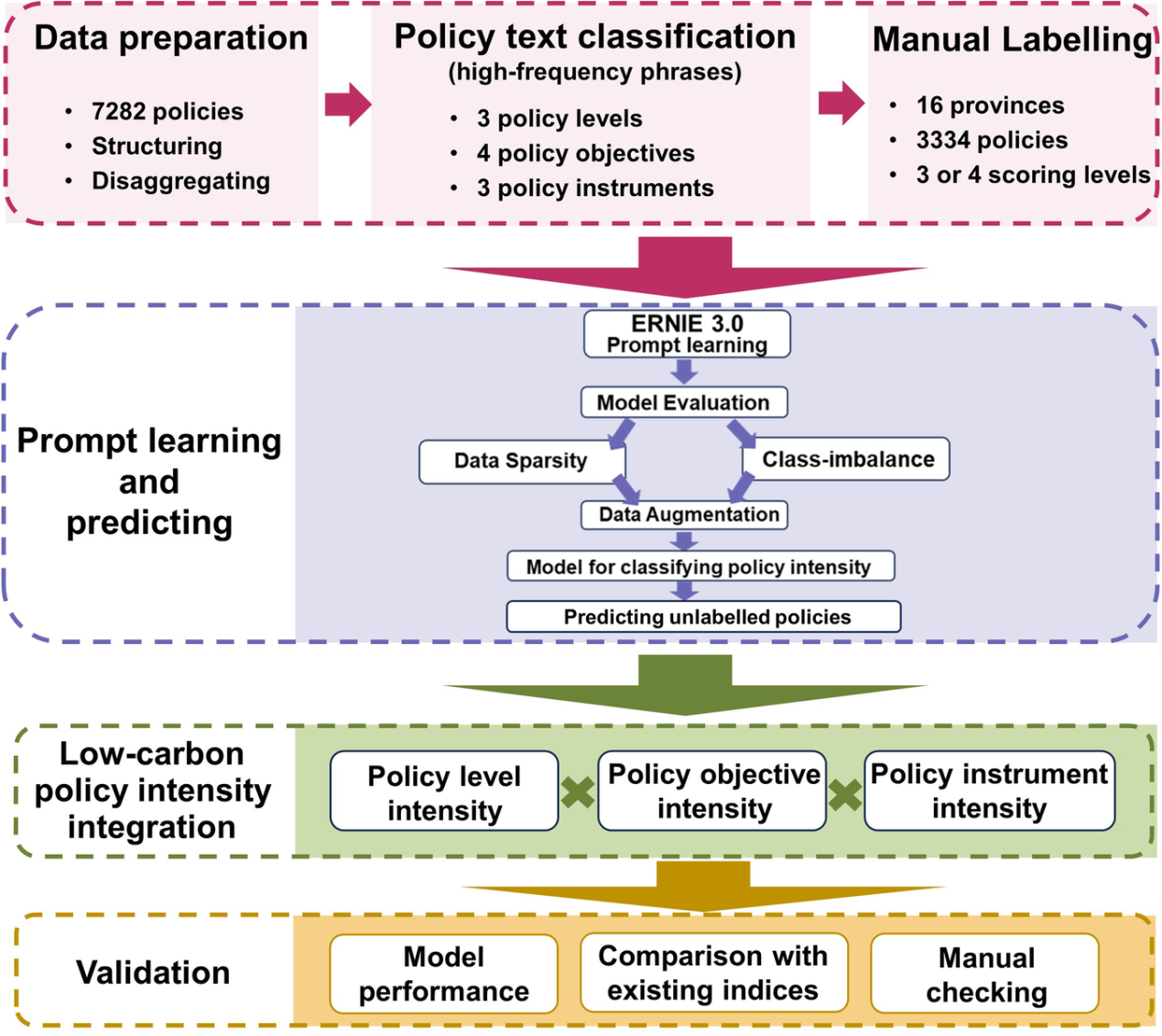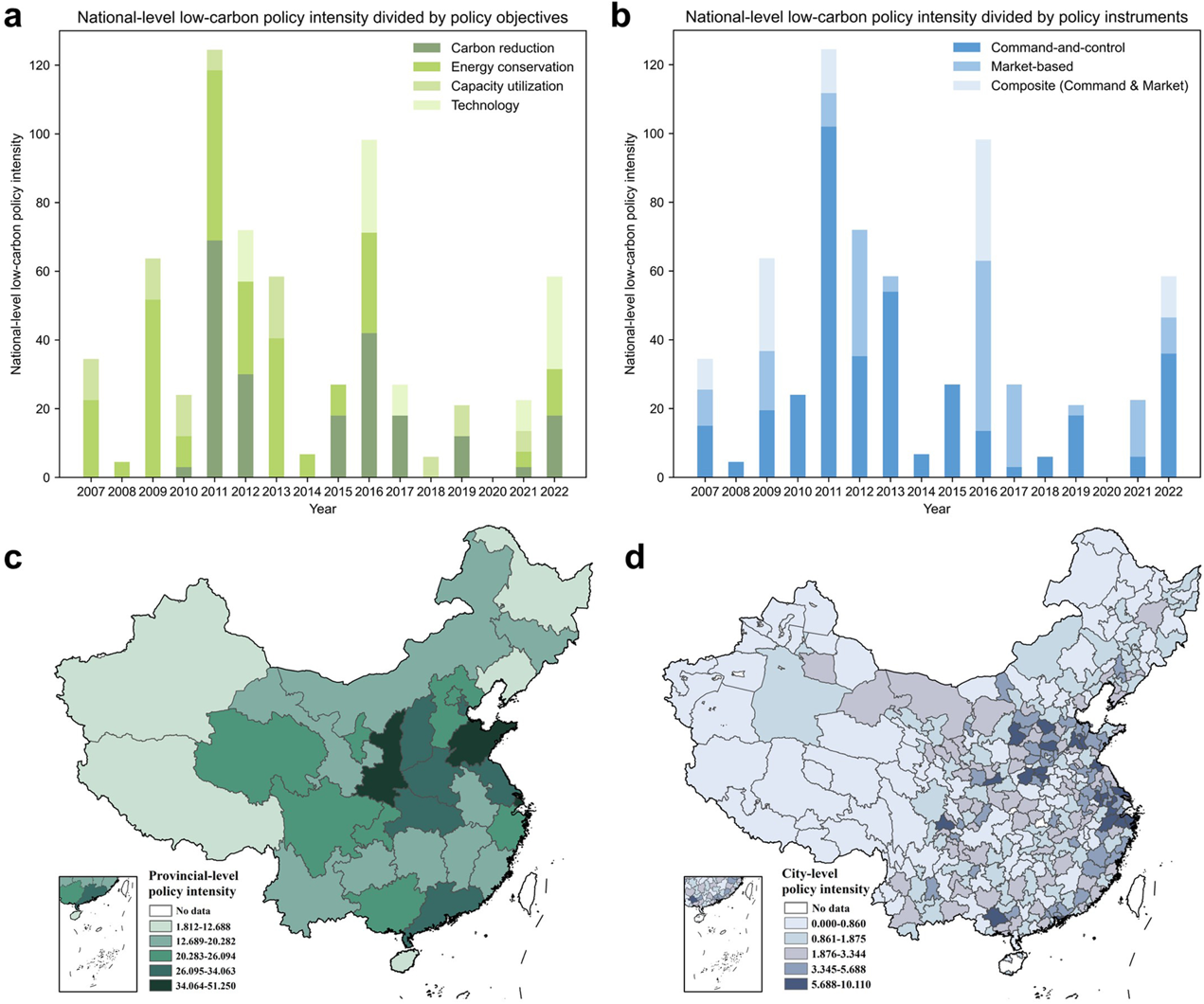On February 23, 2024, Professor Wang Can’s research group from the School of Environment, Tsinghua University released “China’s low-carbon policy intensity dataset from national- to prefecture-level over 2007–2022”. The dataset assessed the intensity of 7282 low-carbon policies promulgated by the nation, 31 provinces, and 334 prefecture cities. This study further aggregates sub-intensity indices for three policy levels (i.e., national-, provincial-, and prefecture-level), four policy objectives (i.e., carbon reduction, energy conservation, capacity utilization, and technology), and three policy instruments (i.e., command-and-control, market-based, composite instruments). By merging macro and micro data, the research can provide data support for the quantitative evaluation of low-carbon policies and low-carbon policy making.
Low-carbon policies are essential for facilitating manufacturing industries’ low-carbon transformation and achieving carbon neutrality in China. However, existing empirical studies primarily quantify the effects of pilot, short-term, regional, and industry-specific policies. Text analysis for evaluating policy intensity has also been predominantly centered on national-level policies, lacking a direct and comprehensive quantification of low-carbon policies. Methodologically, significant human biases and the over-fitting issue could be found in the traditional 100% manual labeling or a pre-train and fine-tune paradigm for policy texts with smaller samples and higher manual labeling costs.
To address these issues, the study employs a hybrid model based on natural language processing and ERNIE 3.0 prompt learning to quantify the policy intensity of 7,282 low-carbon policies from the policy inventory. This approach provides a new, fully transparent, and repeatable policy evaluation paradigm that covers data preparation, policy text classification, manual labelling, prompt learning and predicting, low-carbon policy intensity integration, and validation (as shown in Figure 1).

Figure 1. The research framework of building China’s low-carbon policy intensity dataset
To reflect the heterogeneity of low-carbon policy intensity, this study further aggregates sub-intensity indices for three policy levels, four policy objectives, and three policy instruments. The study indicated strong cyclicality for national-level low-carbon policy intensity, which had stronger intensity in 2011 and 2016 (i.e., the first year of China’s 12th and 13th Five-Year Plan). From the perspective of policy objectives, policies for energy conservation had better continuity, while carbon reduction started to have independent policies in 2010 after China first proposed the carbon emission reduction target in 2009. From the perspective of policy instruments, although command-and-control policies dominated low-carbon policies before 2015, market-based and composite instruments made greater contributions after 2015.

Figure 2. Descriptive statistics of low-carbon policy intensity in China.
The research findings were published online on February 16 under the title “China’s low-carbon policy intensity dataset from national- to prefecture-level over 2007–2022” in the international academic journal Scientific Data. Dong Xinyang, a doctoral student from School of Environment, Tsinghua University, is the first author of the paper, with Professor Wang Can from the School of Environment being the corresponding author. Co-authors of the paper include Associate Professor Zhang Fang from Tsinghua University’s School of Public Policy and Management, as well as doctoral students Zhang Haowen and Xia Chengqi from School of Environment, Tsinghua University. This research was supported by the National Natural Science Foundation of China.
Link to the paper: https://doi.org/10.1038/s41597-024-03033-5





